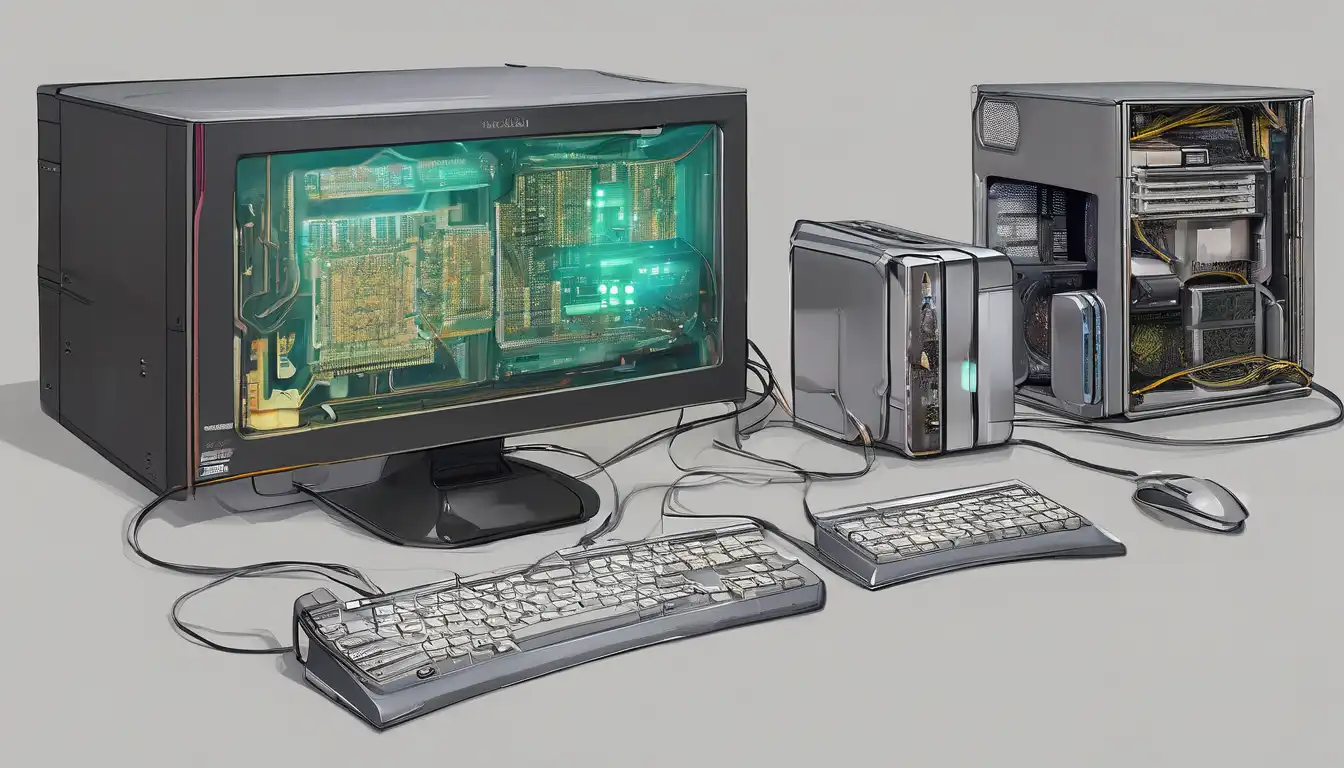Revolutionary Advances in Computer Hardware Technology
The world of computer hardware is undergoing unprecedented transformation, with innovations emerging at an astonishing pace. From quantum computing breakthroughs to AI-optimized processors, the landscape of computing technology is being reshaped before our eyes. These advancements are not just incremental improvements but fundamental shifts that promise to redefine how we interact with technology in our daily lives and professional environments.
Next-Generation Processor Technology
Processor manufacturers are pushing the boundaries of what's possible with silicon. The latest CPUs feature advanced architectures that deliver remarkable performance gains while maintaining energy efficiency. Companies like Intel and AMD are introducing chips with 3D stacking technology, allowing for more transistors in smaller spaces. This innovation enables faster data processing and improved thermal management, crucial for both consumer devices and enterprise systems.
AI-accelerated processors represent another significant leap forward. These specialized chips are designed specifically for machine learning workloads, offering substantial performance improvements for AI applications. The integration of neural processing units (NPUs) directly into consumer processors marks a pivotal moment in hardware evolution, making advanced AI capabilities accessible to mainstream users.
Memory and Storage Innovations
The memory sector is witnessing revolutionary changes with the adoption of DDR5 technology, which offers double the bandwidth of previous generations. This advancement is particularly important for data-intensive applications like video editing, scientific computing, and gaming. Meanwhile, storage technology continues to evolve with PCIe 5.0 SSDs delivering read/write speeds that were unimaginable just a few years ago.
Emerging storage technologies like 3D XPoint and phase-change memory are challenging traditional NAND flash limitations. These new approaches promise faster access times, higher endurance, and better reliability. For enterprise applications, computational storage devices are gaining traction, bringing processing power directly to storage media to reduce data movement and improve efficiency.
Graphics and Display Technology
Graphics processing units (GPUs) are becoming increasingly sophisticated, with real-time ray tracing now standard in modern graphics cards. The latest GPUs feature dedicated AI cores that enhance image quality through intelligent upscaling and noise reduction. These advancements are transforming gaming experiences and professional visualization applications alike.
Display technology is keeping pace with hardware improvements. High refresh rate monitors with 4K and even 8K resolutions are becoming more affordable, while OLED and mini-LED technologies offer superior contrast ratios and color accuracy. The emergence of variable refresh rate technology ensures smoother visuals by synchronizing display refresh rates with GPU output.
Quantum Computing Breakthroughs
While still in its early stages, quantum computing represents the most radical departure from traditional computing paradigms. Recent developments have seen significant increases in qubit stability and coherence times, bringing practical quantum applications closer to reality. Major tech companies are investing heavily in quantum research, with some systems already demonstrating quantum advantage for specific computational tasks.
The integration of classical and quantum computing systems is another area of active development. Hybrid approaches that leverage the strengths of both technologies show promise for solving complex optimization problems and advancing materials science research. As quantum hardware becomes more accessible, we can expect to see new applications emerge across various industries.
Cooling and Power Management
Advanced cooling solutions are essential for managing the increasing thermal output of modern hardware. Liquid cooling systems, once reserved for high-end enthusiasts, are becoming more mainstream and affordable. Phase-change cooling and advanced heat pipe designs are enabling higher clock speeds while maintaining stable temperatures.
Power efficiency remains a critical focus area, with manufacturers developing more sophisticated power delivery systems. Dynamic voltage and frequency scaling technologies allow processors to optimize performance based on workload demands, reducing energy consumption without sacrificing responsiveness. These innovations are particularly important for mobile devices and data center applications where power efficiency directly impacts operational costs.
Connectivity and Peripheral Advances
The latest connectivity standards are transforming how devices communicate. Wi-Fi 6E and the emerging Wi-Fi 7 standards offer significantly higher throughput and reduced latency, while Thunderbolt 4 provides versatile high-speed connections for peripherals and displays. These advancements enable seamless integration of multiple devices and support bandwidth-intensive applications.
Peripheral technology is also evolving rapidly. Mechanical keyboards with customizable actuation points, high-precision gaming mice with advanced sensors, and VR/AR headsets with improved tracking accuracy are enhancing user experiences across different applications. The integration of haptic feedback technology in various peripherals adds new dimensions to human-computer interaction.
Future Outlook and Industry Impact
The continuous innovation in computer hardware technology is driving progress across multiple sectors. From healthcare and education to entertainment and scientific research, these advancements are enabling new possibilities and improving existing processes. As hardware becomes more powerful and efficient, we can expect to see further integration of AI capabilities, more sophisticated edge computing solutions, and increasingly personalized computing experiences.
The convergence of different technology domains is creating synergistic effects that accelerate innovation. Hardware-software co-design approaches are becoming more common, with companies optimizing entire systems rather than individual components. This holistic approach promises to deliver better performance and more seamless user experiences across different computing platforms.
As we look to the future, the pace of hardware innovation shows no signs of slowing. Emerging technologies like neuromorphic computing, photonic processors, and advanced materials science promise to push the boundaries even further. The ongoing evolution of computer hardware will continue to shape our digital world, enabling new applications and transforming how we work, learn, and connect with each other.
